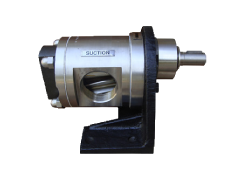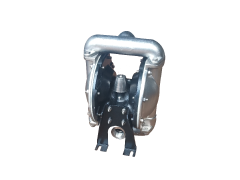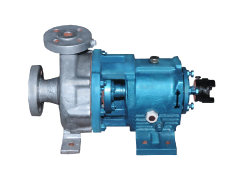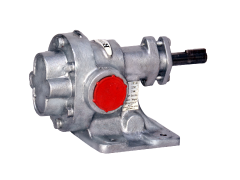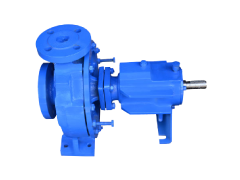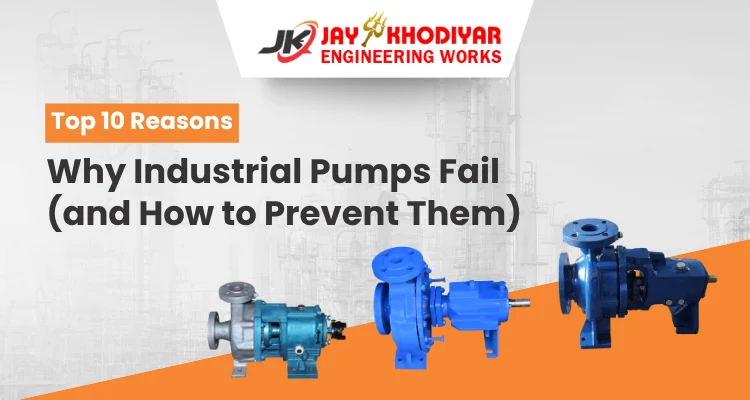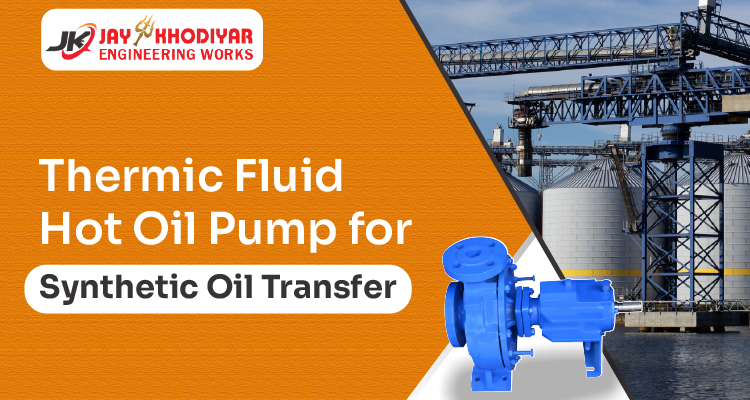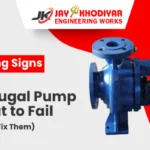
5 Warning Signs Your Centrifugal Pump is About to Fail (And How to Fix Them)
July 26, 2025
Centrifugal vs Positive Displacement Pumps: What’s Right for You?
August 18, 2025Industrial pumps are the backbone of manufacturing, water treatment, chemical processing, and many other sectors. Reliable pumps ensure continuous production, minimize costly downtime, and protect both equipment and workforce safety. However, when pumps fail, the consequences are serious—unexpected shutdowns, expensive repairs, product losses, and safety incidents.
As a leading manufacturer of industrial pumps in India, Jay Khodiyar understands these challenges and offers advanced, customized pumping solutions to help you maximize uptime and performance.
Reason #1. Lack of Proper Maintenance
How Does Skipping Routine Checks Lead to Pump Failure?
Neglecting scheduled pump maintenance is a top reason for unexpected breakdowns. Over time, components wear out, seals degrade, and small leaks escalate into major failures if left unnoticed. Many industrial pump failures can be traced directly to inadequate inspection and servicing routines, which allow minor issues to snowball into catastrophic breakdowns.
How to Prevent It:
Set up a proactive maintenance schedule based on manufacturer recommendations. Routine checks, timely lubrication, and part replacement can catch small issues before they become costly repairs.
Reason #2. Seal Leakage
Why Do Mechanical Seals Fail, and What Are the Risks?
Mechanical seals keep fluids contained within the pump. When these seals fail, leaks occur—resulting in product loss, equipment damage, and unsafe working conditions. Common causes include dry running (starting a pump without fluid inside), improper installation, or using poor-quality seals.
How to Prevent It:
- Always use high-quality, application-appropriate seals.
- Ensure pumps are properly primed before starting.
- Regularly inspect for signs of leakage and replace seals as needed.
Reason #3. Bearing Issues
What Causes Bearing Failure in Pumps?
Bearings support the rotating shaft inside the pump. They can fail due to improper lubrication, contamination from dirt or chemicals, or excessive loading. Symptoms include unusual noise, excessive vibration, and pump overheating—all early warning signs often overlooked until failure.
How to Prevent It:
- Lubricate bearings with manufacturer-recommended oils or greases at the correct intervals.
- Install protective seals to keep out contaminants.
- Monitor for early signs of wear through vibration and thermal checks.
Reason #4. Impeller Wear & Tear
How Does Impeller Damage Affect Pump Performance?
The impeller is a critical rotating component that moves fluid through a pump. Over time, impellers may erode due to abrasive particles, corrode due to aggressive chemicals, or suffer from cavitation damage. This reduces flow rates, efficiency, and eventually leads to total breakdown.
How to Prevent It:
- Inspect impellers regularly for signs of erosion, corrosion, and pitting.
- Replace worn impellers promptly.
- Avoid operating pumps outside their best efficiency point (BEP).
Reason #5. Cavitation
What Is Cavitation and Why Is It So Destructive?
Cavitation occurs when air bubbles form and collapse within the pump, causing loud noises, vibrations, and rapid deterioration of metal parts. It’s a silent destroyer—damaging impellers, seals, and casings.
How to Prevent It:
- Ensure Net Positive Suction Head (NPSH) available always meets or exceeds pump requirements.
- Avoid running pumps at very low pressures or with restricted inlets.
- Monitor for abnormal sounds and correct improper operating conditions swiftly.
Reason #6. Contamination and Buildup
How Does Debris Cause Pump Problems?
Debris, sludge, scale, and chemical precipitates can clog inlets, build up on internal surfaces, and impair moving parts. Left unaddressed, this can lead to flow reduction, overheating, and eventual pump seizure.
How to Prevent It:
- Regularly clean filters, strainers, and internal passages.
- Schedule periodic pump flushing and inspection, especially for abrasive or chemical-heavy fluids.
Reason #7. Incorrect Installation & Misalignment
How Can Poor Setup Damage Pumps?
Improper installation or shaft misalignment introduces harmful vibration, causing premature bearing and seal wear, coupling failure, and even catastrophic shaft breakage. Most misalignment issues start with poorly executed installations or inadequate foundation support.
How to Prevent It:
- Always consult your manufacturer’s installation manual.
- Use alignment tools and follow best practices.
- Hire trained technicians for installation and commissioning.
Reason #8. Corrosion and Chemical Attack
Why Does Pump Material Matter?
Aggressive fluids or harsh process conditions can corrode pump internals, leading to leaks, weak performance, and early failure. Using the wrong materials for construction amplifies corrosion risks.
How to Prevent It:
- Select pump materials based on fluid compatibility (e.g., Stainless Steel, Polypropylene, or Cast Iron).
- Inspect for early corrosion and replace affected components.
- Consult with a knowledgeable supplier like Jay Khodiyar Engineering Works for material selection.
Reason #9. Electrical or Power Issues
How Do Electrical Faults Trigger Pump Failure?
Pumps driven by electric motors are vulnerable to voltage fluctuations, phase loss, surges, and faulty wiring. These issues can cause motor burnout, tripped protection circuits, and, ultimately, mechanical pump failure.
How to Prevent It:
- Use surge protectors, phase failure relays, and reliable starters.
- Regularly check electrical connections and monitor voltage quality.
- Consider IoT-driven monitoring for key pump parameters.
Reason #10. Human & Operational Errors
How Do People Cause Pump Failures?
Inadvertent mistakes such as running pumps dry, overloading, improper shutdown, or ignoring recommended operating procedures can do as much damage as machinery faults. Lack of training and awareness is a leading indirect cause of pump breakdowns.
How to Prevent It:
- Train operators regularly.
- Implement strict standard operating procedures (SOPs).
- Leverage automated controls to avert human error where possible.
Other Issues: Natural Wear, Air Binding & Suction Design Flaws
- Natural Wear & Tear: Even well-maintained pumps have a finite life. Track pump operational hours, inspect frequently, and replace before end-of-life failures occur.
- Air Binding: Air trapped in the pump or suction line leads to low flow, cavitation, and risk of dry running. Always vent systems before operation and use air release valves.
- Suction Pipe Design Flaws: Poor suction piping causes air entrainment and NPSH loss. Design piping with gentle bends, correct diameter, and proper support.
How to Prevent Industrial Pump Failures: Actionable Checklist
- Routine Maintenance: Schedule periodic inspections, lubrication, and servicing.
- Quality Parts: Use only high-quality spares and lubricants, ideally from authorized suppliers.
- Operator Training: Educate your team on SOPs and signs of trouble.
- Performance Monitoring: Use IoT sensors and digital tools for real-time monitoring.
- Spare Inventory: Stock essential spare parts for minimal downtime.
- Expert Consultation: Partner with trusted manufacturers like Jay Khodiyar Engineering Works for custom solutions and technical support.
Ready to Eliminate Pump Failures? Partner with the Experts!
Don’t let unplanned pump breakdowns hamper your business. Jay Khodiyar combines decades of specialized experience, advanced manufacturing, and customer-centric service to deliver pumps that last—even in the toughest industrial environments.
- Consult with our engineers for expert advice on pump selection and troubleshooting.
- Explore our full range of centrifugal, chemical process, rotary, polypropylene, and specialty pumps built for Indian and global standards.
- Request a FREE quote or site visit for custom solutions to your toughest fluid handling challenges.
Keep your operations running—reliably, efficiently, and cost-effectively—with Jay Khodiyar Pumps!







